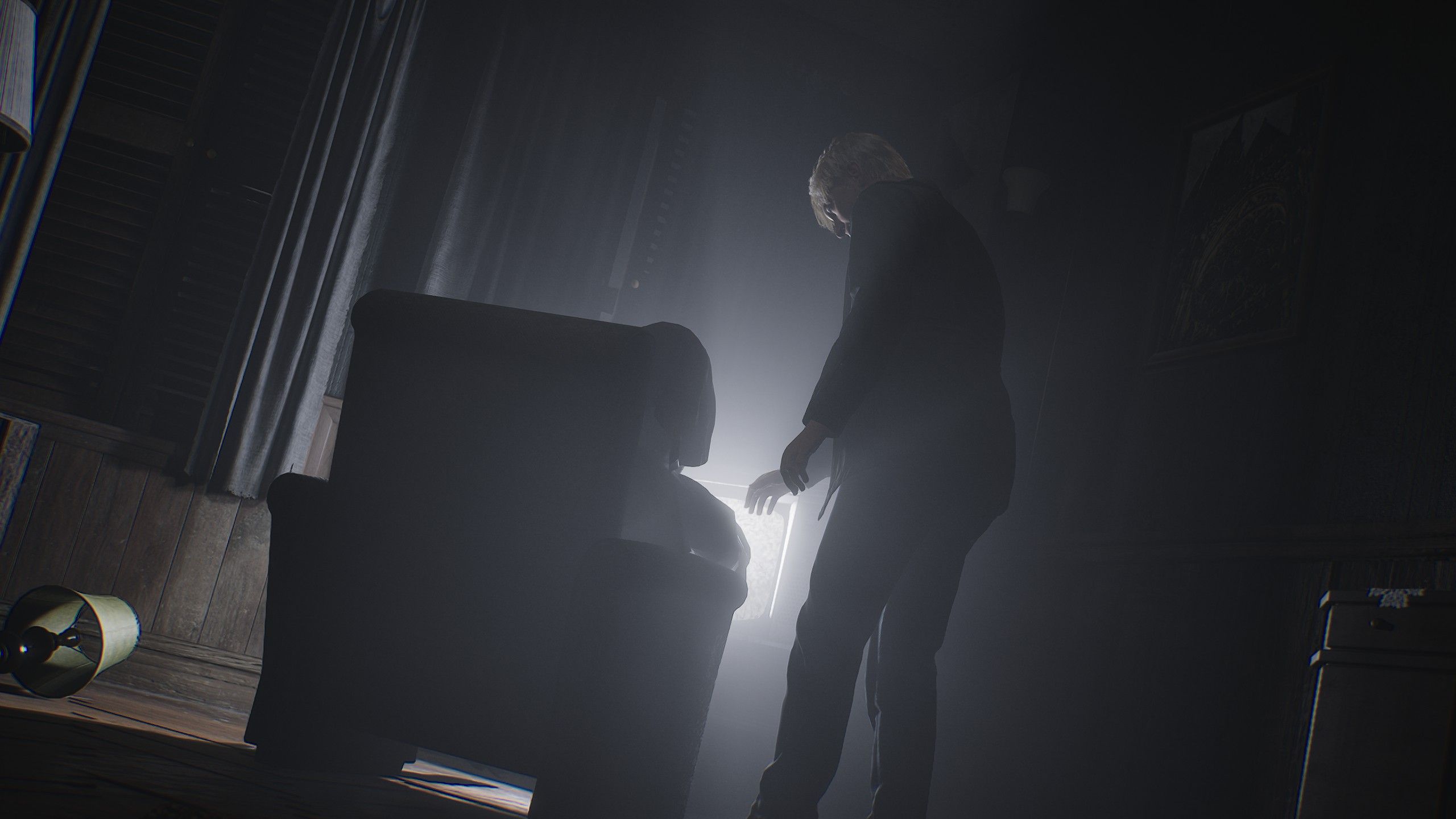
A Quiet Place: The Road Ahead Review
For most of us, the biggest penalty for making too much noise might be a scolding shush from the movie theater seat behind you, but in A Quiet Place: The Road Ahead you’re only ever one creaky floorboard away from getting snuffed out by an alien threat that’s always listening out for you like it’s the most sinister form of Siri. This instant fail stealth-heavy horror story does a pretty convincing job of recreating the breath-holding tension of the films, in addition to borrowing heavily from the likes of Alien: Isolation in the way it casts you as the reluctant rodent trapped in a deadly game of cat and mouse. The result is a consistently stressful undertaking from start to finish, even though my careful creep down The Road Ahead moved at a relentlessly glacial pace and occasionally snagged on some slightly curious design decisions.
A standalone story mostly set around four months after the alien invasion seen in A Quiet Place: Day One, The Road Ahead casts us as college student Alex Taylor and follows her attempts to flee her abandoned hospital hideout in order to make a silent and steady pilgrimage towards an off-shore safe haven isolated from the threat of the monsters, known as Death Angels. It’s a straightforward setup, but tender early moments spent with her likable boyfriend Martin and kindhearted father Kenneth were enough to get me invested in Alex’s cause before inevitable alien-inflicted tragedy spurs her escape plan into action. It’s a bit of a letdown that, in spite of its strong start, the payoff for The Road Ahead’s plot in its dying hours is all too predictable, and its overall story comes up noticeably lacking in impact – particularly in the wake of the far more emotionally resonant tale found in Day One earlier this year.
Still, there’s no shortage of affecting human artifacts to comb through along the way. Outside of the story’s opening chapters and the odd flashback, Alex is alone with her own thoughts – which are appropriately represented via onscreen text since any spoken sentence is only ever followed by a death sentence – for most of The Road Ahead. In lieu of any interactions with other survivors, I got a strong sense of the history of each space I shuffle-stepped through by observing the heartbreaking family portraits handcrafted in a child’s crayon tacked to the wall of a deserted safehouse, or the hilarious note about a toilet paper-related riot left by a store owner in a seaside shopping strip. There are plenty of great worldbuilding touches like this in The Road Ahead, and I had ample opportunity to study every little detail since I moved through it in a constant state of slow-motion, desperately trying to keep my every movement on mute.
Creeping with the Enemy
It might be a first-person adventure almost completely devoid of combat, but The Road Ahead is no “walking simulator;” it’s a balking simulator. Every step you take or action you perform is a reluctant one, because even the lightest door hinge-squeak or stomped-on gravel crunch can alert an alien hunter to your whereabouts and end your slow-walk to safety in an instant. Thus, most of my progress through Alex’s adventure through empty houses, camping grounds, and trainyards was made with micro movements to my controller’s thumbstick; tip-toeing through rooms at a snail’s pace and incrementally tilting forward to push doors open or carefully pulling back to slowly open desk drawers to search through. It felt a bit like coming home late from a night out and trying to find your way to bed without waking your significant other, only in this instance your significant other is a spindly-limbed extraterrestrial who wants to rip your insides out rather than simply ask you to sleep on the couch.
Almost every environment you explore in The Road Ahead is purpose-built to test your coordination and fine-motor skills. Rooms are cramped and cluttered with beast-stirring booby traps to avoid and – if you’re not careful – simply brushing past hollow barrels or pulling open the cover of an air vent too eagerly can bring your swift undoing. Thankfully, Alex is given a homemade phonometer early on which, when carried in her left hand, indicates the decibel level produced by her movements relative to the overall volume of the ambient sounds around her. I basically spent the entire seven-hour journey anxiously trying to prevent its meter from lighting up as a result of each steady-handed interaction I performed, not unlike trying to extract the wishbone in a game of Operation without suddenly triggering the patient’s buzzer and blinking red nose.
Some of the ways The Road Ahead conjures up a life-ending crunch or clang do feel a little contrived, though. It makes total sense for there to be shards of broken glass lining the paths beside the shattered windows of an upturned train carriage, but the number of discarded paint cans to be found on remote forest hiking trails does seem a touch too improbable, like rolling out from under the Simpsons’ family car and finding yourself in a carpark that’s inexplicably full of garden rakes to step on. I managed to suspend my disbelief and just abide by the noise-making obstacle course that the developers have created, but I do wish they’d been able to disguise their monster-rousing trip-ups a little more organically.
The threats to blowing Alex’s cover aren’t only found in the world around her, though; they’re also within. Alex is an asthmatic, so actions of overexertion – like pulling herself up onto ledges or carrying heavy planks to use as makeshift bridges, as well as moments of heightened stress such as finding herself in close proximity to one of the alien stalkers – can push her into a state of noisy hyperventilation, which acts as a heavy-breathing beacon to any monsters in the area. This brings the welcome challenge of identifying when to best use the inhalers that can be collected along the way, even if it does seem a little silly that they’re single-use only, as though their previous owners huffed each of them right up to the limit.
Killer Mic
If it’s not enough that every in-game sound you make in A Quiet Place: The Road Ahead can potentially trigger your termination, there’s also the option to toggle on microphone support if you want to throw on a headset and potentially get Alex eviscerated simply because you cursed in fright or maybe just took a slurp of your soda too loudly. Since I live in a house with a wife, two young kids, and an extremely vocal family dog, I opted to keep the mic on mute for my playthrough of the story. However, after completing it I did hop back in to try it and it absolutely did get me murdered as advertised. So if you happen to live alone inside the mattress-lined walls of a soundproofed safehouse, this feature could bring an added dimension to The Road Ahead’s pervading sense of dread, or let you prank friends who are trying to play.
Quiet Riot
The Road Ahead isn’t only about stalking around in silence like some sort of survival-horror street mime, and along with the phonometer you are provided with some other basic tools to keep the keen-eared killers at bay. Bricks and bottles can be picked up and lobbed to temporarily distract them in fairly standard stealth-game style, while some other items serve dual purposes, like the hand flares that can be sparked to either light up darker environments or tossed away to confuse your petal-faced pursuers with their crackling hiss. It does feel a bit arbitrary the way certain items in Alex’s inventory can only be wielded in certain hands, though. It may create an added layer of tension to be forced to choose between measuring sound with the phonometer and illuminating the path forward with Alex’s flashlight, for example, since they can each only be wielded in her left hand, but it hardly makes any logical sense. Where was this flashlight purchased, at Ned Flanders’ Leftorium?
Occasionally, I’d find myself caught in close quarters with a monster and not have any noise-making tools in either hand, which put me in the lose-lose situation of either trying to make a run for it and getting instantly slashed in the back, or standing perfectly still only for the blind beast to accidentally bump straight into my nose and strike me down on the spot. It didn’t seem to matter if I chose to stick or twist, since either way I was going to find myself stuck and twisted apart. Thankfully, The Road Ahead’s generous auto-save system meant I was rarely penalised too heavily each time I perished, so although the slightly scripted feel of its enemy encounters mean it’s never as outright terrifying as Alien: Isolation, it is at the very least more lenient and less likely to frustrate because you couldn’t reach a manual save point.
It’s never as outright terrifying as Alien: Isolation, [but] it is at the very least more lenient and less likely to frustrate.
The quarter-speed crawl along The Road Ahead does eventually run out of steam, though, even despite the fact that encounters with the aliens do evolve in some ways. There’s only ever one enemy type, but midway through they develop the ability to sense your movements even if the sounds you make are masked by the threshold of the ambient noise, effectively forcing you to simply take your hands off the controls and stand as still as a statue until the concussive effects of their scanning is completed, as an example. These modest changes help preserve the tension level throughout, but they struggle to completely disguise the fact that you’re otherwise mostly doing tedious tasks like turning valves and searching through drawers for supplies like any other survival-horror game, only at a considerably slower pace and without any combat sequences to release that tension in. There is one short flashback sequence that allows you to briefly blaze away with a shotgun out of the back of a speeding van, but The Road Ahead could have done with a few more of these dynamic detours to help break up the bit-by-bit crawl even more.





